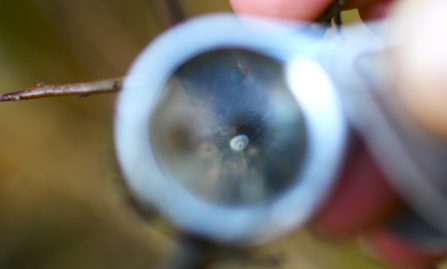With Easter still a few months off, the team from BBOWT embarked on its annual egg-hunt tradition, searching for prizes more valuable than chocolate.
The rare brown hairstreak butterfly is found in select areas across the south of Britain, with declining numbers from habitat loss resulting in its Vulnerable designation on the Butterfly Red List. Spending much of its adult life hidden high in hedgerows and in the treetops, this elusive butterfly is monitored by counting its eggs in the winter.
Last Tuesday, a group of fifteen BBOWT volunteers and staff braved the cold to scour through blackthorn hedgerows at Asham Meads nature reserve in Oxfordshire, hoping to spot these tiny white eggs which measure just 1mm in diameter.

